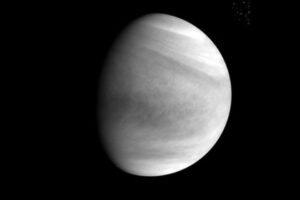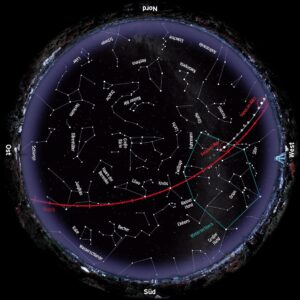In the coming weeks Venus, our “sister planet”, will become a good object for observing. The planet is a bright, easily detectable object in the morning or evening sky, but it is usually located very close to the horizon with corresponding atmospheric disturbance and rather short observing times. This will improve from around the end of January, when Venus will become progressively brighter and visible for longer in the evening sky. Then the planet will be found easily with the naked eye immediately after sunset and can be observed for almost four hours.
Even good binoculars, such as the Omegon Nightstar are suitable for observing. In telescopes with an aperture from around 90mm, Venus can already be identified as a small disc. Just like the Moon, the planet exhibits different phases, although details of the surface remain hidden owing to its very dense atmosphere. The cloud structures can be distinguished very well with telescopes from 130mm aperture. The use of a suitable filter (violet, dark blue, blue) is recommended to improve the contrast.
Venus is the second innermost planet in our solar system and is a similar size to Earth. Its atmosphere consists of carbon dioxide, nitrogen, sulphur dioxide and various noble gases. This composition, combined with its proximity to the Sun, makes our neighbouring planet a hostile and mysterious world. As it orbits the Sun, Venus rotates backwards, that is in exactly the opposite direction to our Earth. Therefore on Venus the Sun rises in the west and sets in the east. After the Moon, the planet is the brightest object, but, just like Mercury it is only visible in the morning or evening sky – hence it is also given the designation “morning-” or “evening star”.
From mid-January, Venus dominates our evening sky immediately after sunset on the southwestern horizon. Between then and the end of March it changes its position from about 25° to 46° and reaches a brightness of -4.7mag by the end of April. During this period it moves towards the western horizon and passes through the constellations Aquarius, Pisces and Aries. In April it reaches Taurus and can even be found close to the Pleiades (M45) at the beginning of April.
From January to May it’s best to track Venus using a star chart.
Have fun observing Venus in 2020!


